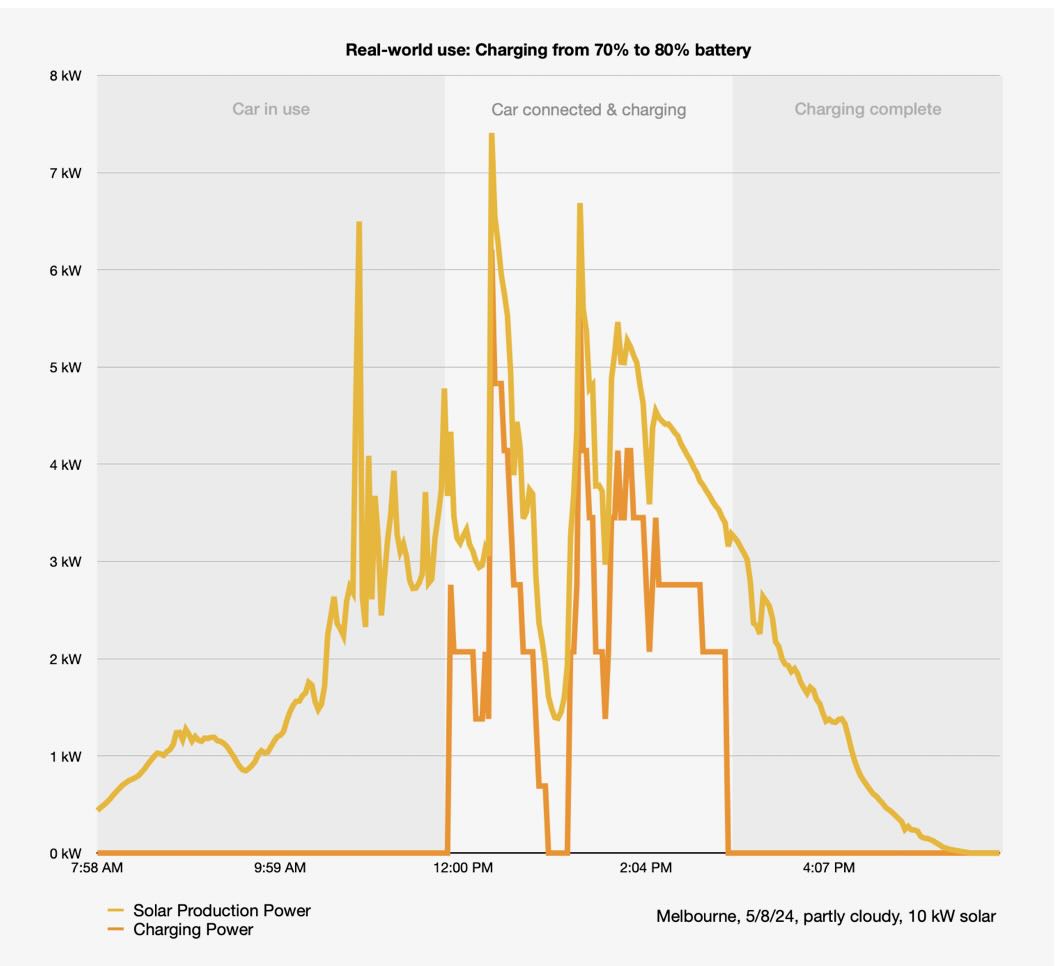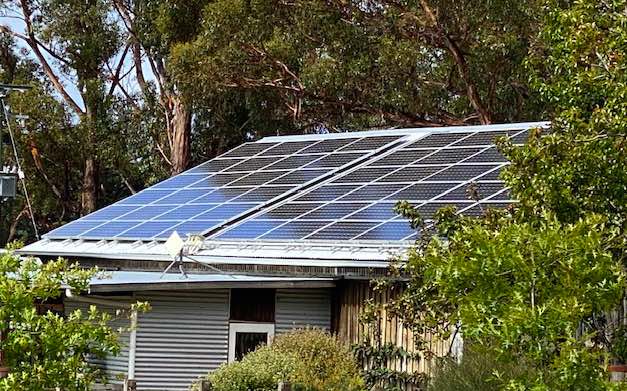The recent cut in rooftop solar feed-in tariffs and the looming possibility of a solar tax are sparking concern among solar power users.
In Victoria, the minimum feed-in tariff was recently reduced to 3.3 cents per kilowatt-hour. In New South Wales, IPART forecasts solar exports will be worth between 4.9 to 6.3 cents per kilowatt-hour in 2024–25, down from 7.7 to 9.4 cents in 2023/24. These changes make it crucial to optimize solar energy usage at home, especially for electric vehicle (EV) charging.
During less sunny months, charging your EV at an equal rate throughout the day is not efficient because your solar system produces more energy around noon than in the morning or afternoon. This means you might be exporting kilowatt-hours at a low feed-in price around mid-day and then buying back energy at a higher cost later in the day. Aligning your EV charging times with peak solar production can help you avoid this issue.
However, setting up an optimised solar system for EV charging can be expensive due to the need to buy special chargers, home batteries, or meters, all from the same manufacturer. And doing it all manually is a huge hassle – who has time to regularly check for the sun and adjust the charging throughout the day?
Instead, many homeowners already have all the necessary equipment through their personal computers. A PC could manage and optimise solar energy use, making additional costly equipment unnecessary, if only it had access to all the devices.
I have tried this out using the Tesla API and the Fronius Inverter API on my Mac, and successfully managed to get to ’smart charging’. Now, based on the solar output (read from the Fronius API), and if the battery is below 80%, the Mac tells the Tesla to start charging (via the Tesla API).

If a cloud passes by it will reduce the charging current and then increase it again when the sun is back. This is a highly efficient way to charge, and on a typical day in Spring would save about 5$, compared to plugging in overnight. All by making the existing equipment smarter.
There are still some limitations: Accessing detailed power inflow and outflow data from Smart Meters can be challenging, as some power companies only offer this data in CSV files, not through APIs.
So I cannot easily read the actual, real-time use of the home with software. It also only works with some manufactures, I haven’t yet gone through all of them, but from a few checks I found that many car makers are still at the stage of developing such APIs, rather than having them up and running.
These limitations underscore the need for open standards in the energy sector, and some efforts are underway globally under the banner of “Open Energy”. Future standards will be helpful, if they enable us to seamlessly integrate all our energy devices into a smart and efficient home.
I have included links to the two APIs from Fronius and Tesla below to get you started. I would also invite the community to help me check if we can further build out such software. Right now, it works for me, but it would be great if we could make it more robust, so that anyone could install it.
This could easily enhance home solar systems and make optimised EV charging more accessible. If you’re interested, live in VIC Bayside or Glen Eira, and have a similar setup to mine (Tesla, Fronius Inverter, Tesla Wall Charger, Apple Mac computer), please contact me at [email protected].
Links to technical documentation:
- Tesla API documentation: https://developer.tesla.com/docs
- Fronius Inverter API documentation: https://www.fronius.com/en/solar-energy/installers-partners/technical-data/all-products/system-monitoring/open-interfaces/fronius-solar-api-json-


